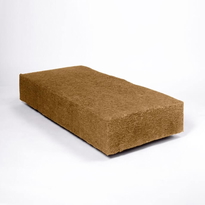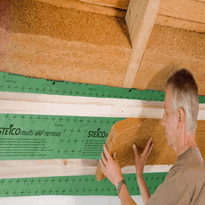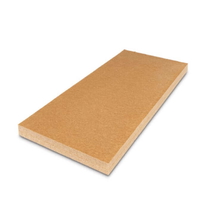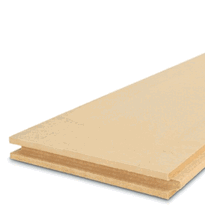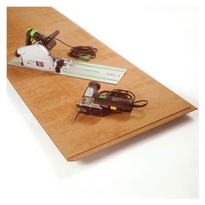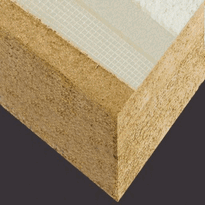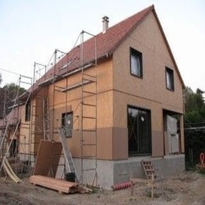How Breathable Systems Enhance Indoor Air Quality and Comfort
Breathable external wall insulation systems play a vital role in enhancing indoor air quality and occupant comfort. By effectively managing moisture within the building fabric, these systems allow water vapour to pass through walls, facilitating natural drying processes. This process prevents moisture from becoming trapped within the wall structure, significantly reducing the risk of condensation formation. Lower moisture levels inside the walls minimise the likelihood of mould growth and associated respiratory concerns, promoting healthier indoor environments. Additionally, by maintaining warmer internal surfaces, breathable External Wall Insulation (EWI) systems help prevent cold spots where condensation is likely to occur. This not only protects the structural integrity of the building but also contributes to a more comfortable living space. Furthermore, breathable systems decrease dampness and microbial growth, creating a fresher and healthier atmosphere without relying heavily on mechanical ventilation or heating. Such systems support sustainable and comfortable living by maintaining balanced indoor humidity levels and ensuring a resilient, moisture-managed building envelope suitable for UK climates. Breathable insulation materials also promote better thermal regulation, supporting overall indoor comfort and energy efficiency.
Environmental and Economic Advantages of Breathable External Wall Insulation
External wall insulation systems that are designed to allow walls to breathe offer notable environmental and economic advantages for UK properties. By enhancing a building’s overall energy performance and sustainability, these systems play a crucial role in reducing energy consumption.
They minimise heat loss during winter and limit heat gain in the warmer months, decreasing reliance on artificial heating and cooling and thereby lowering utility bills.
Unlike internal insulation, breathable external systems preserve interior space and improve moisture management. They help prevent dampness and minimise the risk of structural deterioration, which can extend the lifespan of a building’s walls.
Many of these systems utilise natural, renewable materials such as wood fibre or cork, which have a lower carbon footprint, supporting broader environmental objectives.
Furthermore, breathable external insulation contributes to mitigating the urban heat island effect, which is a growing concern in UK cities.
By promoting healthier, more durable walls, these systems also reduce long-term maintenance costs.
Breathable external wall insulation (Reflects its ability to regulate moisture effectively, preventing dampness and mould development within the walls.)
Technical Materials and Installation Considerations
Selecting the appropriate materials and understanding installation considerations are essential steps in ensuring the effectiveness and longevity of breathable external wall insulation systems. Materials chosen must be vapour permeable and capillary active, allowing moisture to escape while preventing water ingress. These properties help maintain the structural integrity of the building and prevent mould growth. Options such as mineral wool provide fire resistance and durability, while multifoil insulation offers versatile thermal performance suited to various applications.
Proper surface preparation is crucial; surfaces should be clean, dry, and compatible with existing structures to ensure optimal adhesion and performance. Attention should be paid to environmental conditions during installation—installing in suitable weather avoids moisture entrapment and reduces the risk of issues down the line. Adherence to local building regulations and standards is mandatory to guarantee compliance and safety.
Skilled installers must employ correct techniques to eliminate gaps, create a tight seal, and maximise the insulation’s effectiveness. The correct selection and meticulous installation of materials significantly influence the system’s overall durability, safety, and thermal performance. Proper installation practices] also contribute to the system’s ability to maintain breathability over time.
Protecting Buildings and Extending Durability With Breathable Insulation
Moisture management is fundamental to safeguarding buildings and extending their lifespan. Breathable insulation systems play a vital role in this process by allowing water vapour to escape while preventing the ingress of water. These systems effectively tackle several key issues:
1. They prevent dampness and mould growth by enabling moisture vapour to exit, reducing condensation within walls, and lowering health risks associated with mould exposure. Facilitating moisture interaction with building fabric is essential for maintaining structural health and performance.
2. They support structural integrity by aiding moisture migration, decreasing decay in materials such as masonry and timber, and avoiding interstitial condensation that can compromise the building’s stability.
3. They enhance indoor air quality and comfort by stabilising humidity levels and preventing health problems linked to dampness.
4. They boost durability by shielding walls from adverse weather conditions, reducing freeze-thaw damage, and prolonging the lifespan of the building envelope through weather-resistant materials.
This comprehensive approach to moisture control significantly contributes to the long-term resilience and sustainability of buildings across the UK.
Health Benefits and Safety Aspects of Breathable External Wall Solutions
How do breathable external wall solutions improve health and safety within buildings?
These systems enhance health by effectively managing moisture, allowing vapour to escape and preventing dampness and mould development. By reducing mould growth, they lower airborne spores, which is essential for respiratory health, especially for vulnerable groups such as children and the elderly. [Breathable materials also help regulate indoor humidity levels, creating a more comfortable and healthier environment.](https://abdrylining.com/external-wall-insulation/) Improved moisture control also protects structural components from decay, ensuring the building’s integrity and safety. The materials used in breathable solutions, including natural options like cork and mineral-based products, emit fewer harmful volatile organic compounds (VOCs), creating safer indoor environments. Proper installation is crucial and ensures adherence to fire resistance standards, thereby minimising safety risks.
Conclusion
Breathable external wall insulation provides an effective solution for enhancing indoor air quality, increasing the durability of buildings, and minimising environmental impact. By utilising specialised breathable materials and meticulous installation techniques, this approach effectively manages moisture, improves energy efficiency, and ensures long-term safety. Implementing breathable systems supports healthier indoor environments while offering economic benefits through lower energy costs. To optimise performance and longevity, a thorough understanding of technical considerations is essential, making breathable external wall insulation a sustainable and durable choice for building improvement across the UK.
